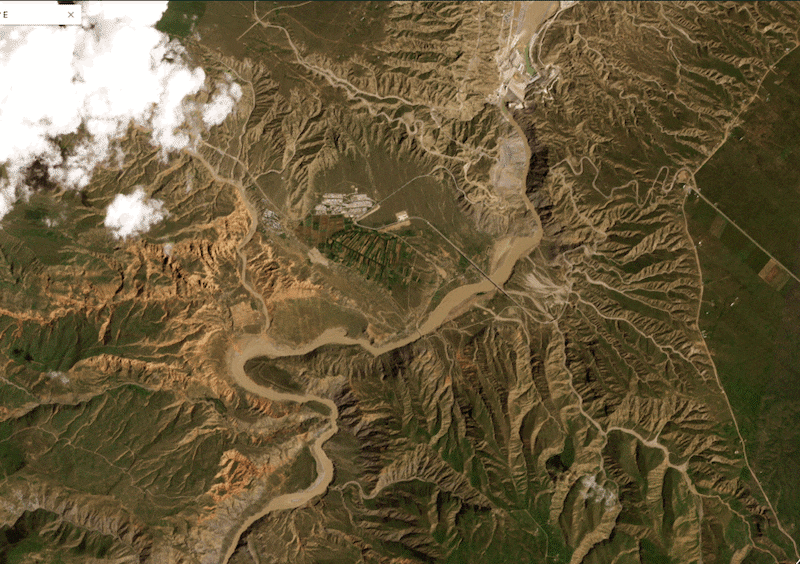Read RFA coverage of this story in Tibetan.
Rising waters from a new dam in central China have submerged the area where a 135-year-old Tibetan Buddhist monastery once stood, as well as a nearby village, according to experts who viewed satellite photos and two sources inside Tibet.
The Atsok Monastery, built in 1889, was demolished earlier this year to make way for the expansion of the Yangqu hydropower station in Qinghai province.
Tibetans have decried the dam’s construction, saying it is yet another example of the Chinese government’s disregard for their culture, religion and environment.
After floodgates for the dam were closed around Aug. 10, reservoirs filled and water levels rose in upstream areas of the Machu River, or Yellow River in Chinese, experts who saw the satellite imagery said.
Satellite photos showed the complete submersion of the 18-hectare (44-acre) monastery area and nearby Chorten village and the partial submersion of adjacent farmlands of Yangchu village, said Y. Nithiyanandam, professor and head of the geospatial program at Takshashila Institution in Bengaluru, India.
"The water levels have risen by nearly 100 meters [328 feet] above the previous regular flow, submerging the villages. It is difficult to predict at this time whether the water storage has reached its threshold or may continue to rise," added Nithiyanandam.

Jacob Bogle, a private satellite imagery analyst, also said the images showed that water levels reached the elevation of the monastery on Aug.16, and that by Aug. 31, the site was completely submerged.
The growing reservoir now reaches about 30 kilometers (19 miles) upstream, possibly flooding some of the farmland around the village of Thangnak town, Bogle said.
Spiritual place
Chinese authorities said they would fund the costs of dismantling and reconstructing parts of the monastery, but many of the murals and surrounding stupas cannot be physically moved and so were destroyed.
Tibetans believe that the place where the monastery stood is sacred, and that it had been made holier over 135 years of prayers and practice by several generations.
RELATED STORIES
[ Historic Tibetan Buddhist monastery is being moved to make way for damOpens in new window ]
[ Tibetans forced to move to make way for Chinese power plantOpens in new window ]
The Yangqu hydroelectric plant — expected to generate about 5 billion kilowatts of power annually to Henan province — is an expansion of the Yangqu Dam that was first built in 2010 and began operating in 2016 as a 1,200-megawatt hydropower station.
The expansion was started in 2022 and was completed this year. China’s National Development and Reform Commission, or NDRC, said it would force the relocation of more than 15,500 people — nearly all ethnic Tibetans — living in 24 towns and villages in Dragkar, Kawasumdo and Mangra counties.
Dragkar county sits in Tsolho, or Hainan in Chinese, Tibetan Autonomous Prefecture in the historic Amdo region of Tibet.
State media reports said on Aug. 14 that the dam had officially lowered its gate to store water, indicating that the construction had entered “the sprint stage before it is put into production and power generation.”
Local Tibetan sources, who requested anonymity for fear of reprisals, told RFA they fear that the dam could cause further flooding and destroy their homes and farmland in the nearby Yangqu village.
Edited by Roseanne Gerin and Malcolm Foster.
